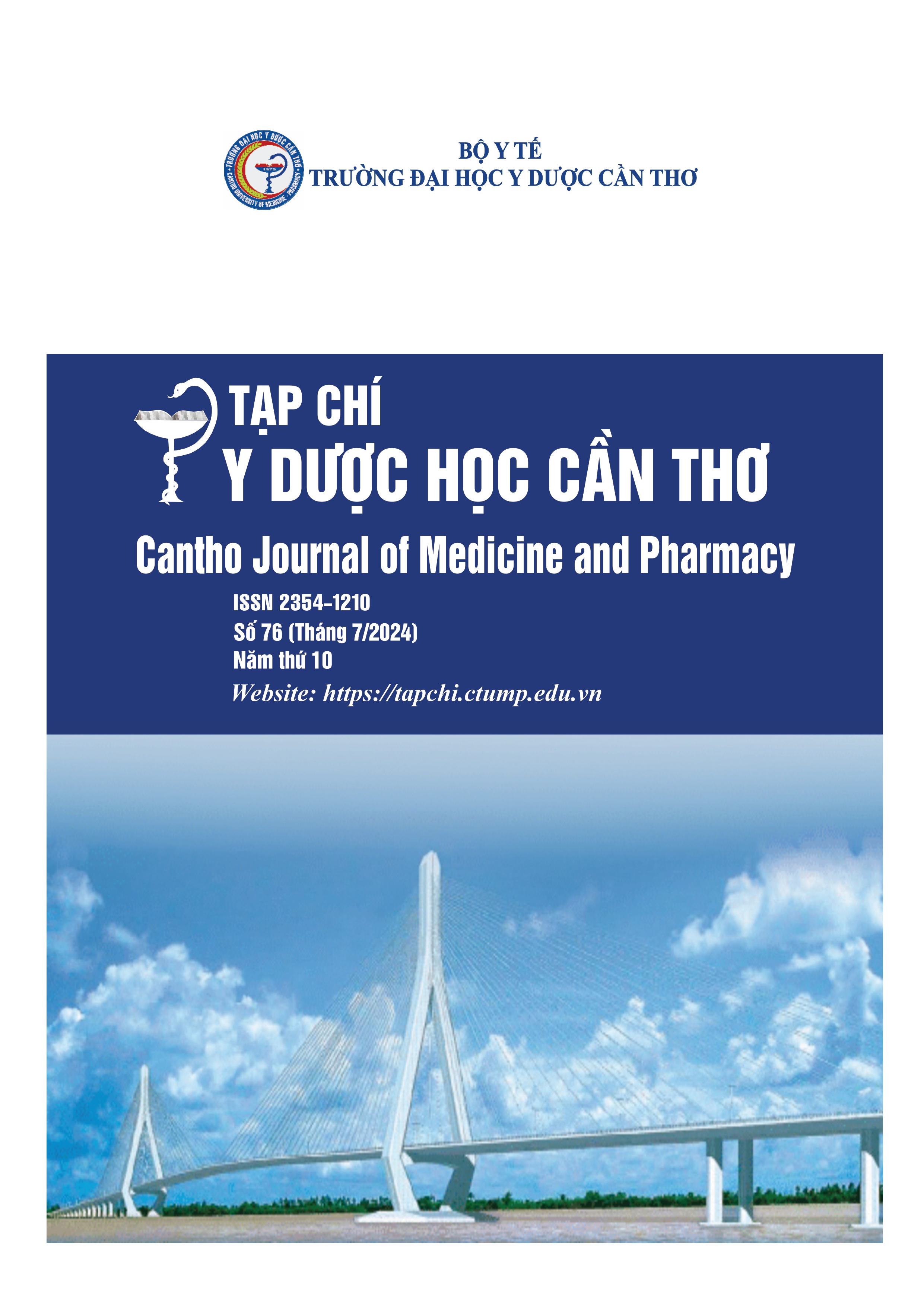COAGULATION ABNORMALITIES IN THE CIRRHOSIS PATIENT AT DONG THAP GENERAL HOSPITAL
Main Article Content
Abstract
Background: All three phases of hemostasis—primary hemostasis, plasma coagulation, and fibrinolysis—experience complicated alterations due to cirrhosis. Objectives: To determine the correlation between the degree of cirrhosis and upper gastrointestinal bleeding from ruptured varices of the esophageal and the features of hemostatic diseases. Materials and methods: The case series study describes 100 cirrhotic from April 2023 to January 2024. Results: There were 68% of patients with decreased platelet count. About 80% had abnormal PT, INR, and PT%, 71% had prolonged APTT and 57% had decreased fibrinogen. Patients with more severe cirrhosis have more prolonged APTT, PT, and INR. In cases of severe decrease in fibrinogen, most patients were Child C (85.7%). All patients with gastrointestinal bleeding due to ruptured esophageal varices had abnormal PT, PT%, and INR. Patients with a more severe decrease in fibrinogen were correlated with a higher rate of upper gastrointestinal bleeding (p < 0.05). Conclusions: Abnormal coagulation disorders were related to the degree of cirrhosis and complications of upper gastrointestinal bleeding due to ruptured esophageal varices.
Article Details
Keywords
coagulation abnormalities, cirrhosis, upper gastrointestinal bleeding
References
2. Basili S., Raparelli V., Napoleone L., Talerico G., Corazza G. R., et al. Platelet Count Does Not Predict Bleeding in Cirrhotic Patients: Results from the PRO-LIVER Study. Am J Gastroenterol, 2018. 113(3), 368-375, doi: 10.1038/ajg.2017.457.
3. Labidi A., Baccouche H., Fekih M., Mahjoub S., BenMustapha N., et al. The relationship between coagulation disorders and the risk of bleeding in cirrhotic patients. Ann Hepatol, 2019. 18(4), 627-632, doi: 10.1016/j.aohep.2018.12.007.
4. Phan Thị Ngọc Quỳnh. Khảo sát đặc điểm rối loạn đông cầm máu trên bệnh nhân xơ gan tại bệnh viện Đa khoa Vùng Tây Nguyên, Luận văn Thạc sĩ y học, Đại học Y Dược TPHCM, 2021.
5. Trần Quang Trạng. Khảo sát đặc điểm rối loạn đông cầm máu trên bệnh nhân xơ gan tại bệnh viện đa khoa trung tâm Tiền Giang, Luận văn Thạc sĩ y học, Đại học Y Dược TPHCM, 2011.
6. Muciño-Bermejo J., Carrillo-Esper R., Méndez-Sánchez N., Uribe M. Thrombosis and hemorrhage in the critically ill cirrhotic patients: five years retrospective prevalence study. Ann Hepatol, 2015. 14(1), 93-98, doi: 10.1016/S1665-2681(19)30805-1.
7. Bui Huu Hoang. Current Status of Liver Cirrhosis in Vietnam. VASLD 2019.
8. Bùi Văn Trung, Trần Ngọc Dung, Đoàn Thị Kim Châu. Nghiên cứu rối loạn đông máu trên bệnh nhân xơ gan. Tạp chí Y dược học Cần Thơ. 2015. 1(1), 49-55.
9. Georgios N. K., Aikaterini O., Leonidas C., Nikolaos I. K., Epameinondas V. T., et al. von Willebrand factor and procoagulant imbalance predict outcome in patients with cirrhosis and thrombocytopenia. Journal of hepatology, 2016. 65(5), 921-928, doi:
10.1016/j.jhep.2016.06.002.


